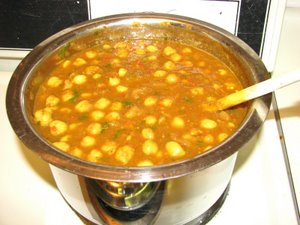This is an extremely easy and delicious khichidi recipe I tried recently. Consuming seeds and nuts like til or sesame seeds, flax, peanuts, almonds etc is good during the winter season. This khichidi is extremely light on the tummy and yet good for the cold winters as it uses sesame powder. Vegetables can be optionally used in this khichidi.This is a good upwas recipe as it doesn't use ginger, garlic or onions.
Ingredients
1 cup basmati rice
1 cup moong dal
1 teaspoon mustard seeds
1 teaspoon grated ginger
1/4 teaspoon cardamom powder
1 teaspoon grated ginger
1/4 teaspoon cardamom powder
2 tablespoon til or sesame seeds
1/2 cup cut vegetables (choose from potato, carrot, peas, corn, beans)
1 tablespoon coriander-cumin powder (dhania jeera powder)
1/2 teaspoon garam masala or goda masala powder (omit if you desire less spicier version)
1 teaspoon gur(jaggery or mollases) or sugar
1 tablespoon finely chopped curry leaves
1 tablespoon finely chopped curry leaves
1/2 teaspoon turmeric powder
1/2 teaspoon chili powder or as per taste
pinch of asafoetida
1 tablespoon oil
2 tablespoon grated coconut for garnishing
2 tablespoon grated coconut for garnishing
salt for taste
Method
Wash the dal and rice and drain the water. Keep aside. Roast the sesame seeds till crisp and grind them into a fine powder. Heat oil in a pan and add mustard seeds. When they start popping add sesame seed powder. Fry for a minute and add dhania-jeera powder, asafoetida, chili powder and turmeric powder. Add curry leaves and ginger. Stir a few times and add the vegetables and cardamom powder. Fry for 3-4 minutes and add the washed rice and moong dal. Saute till the spices blend completely with the rice. Saute on low flame for 5-8 minutes. Add 4 cups of boiling hot water and salt for taste. Cook on low flame till the rice and dal are well cooked. Garnish with ghee, coconut and coriander leaves.

































